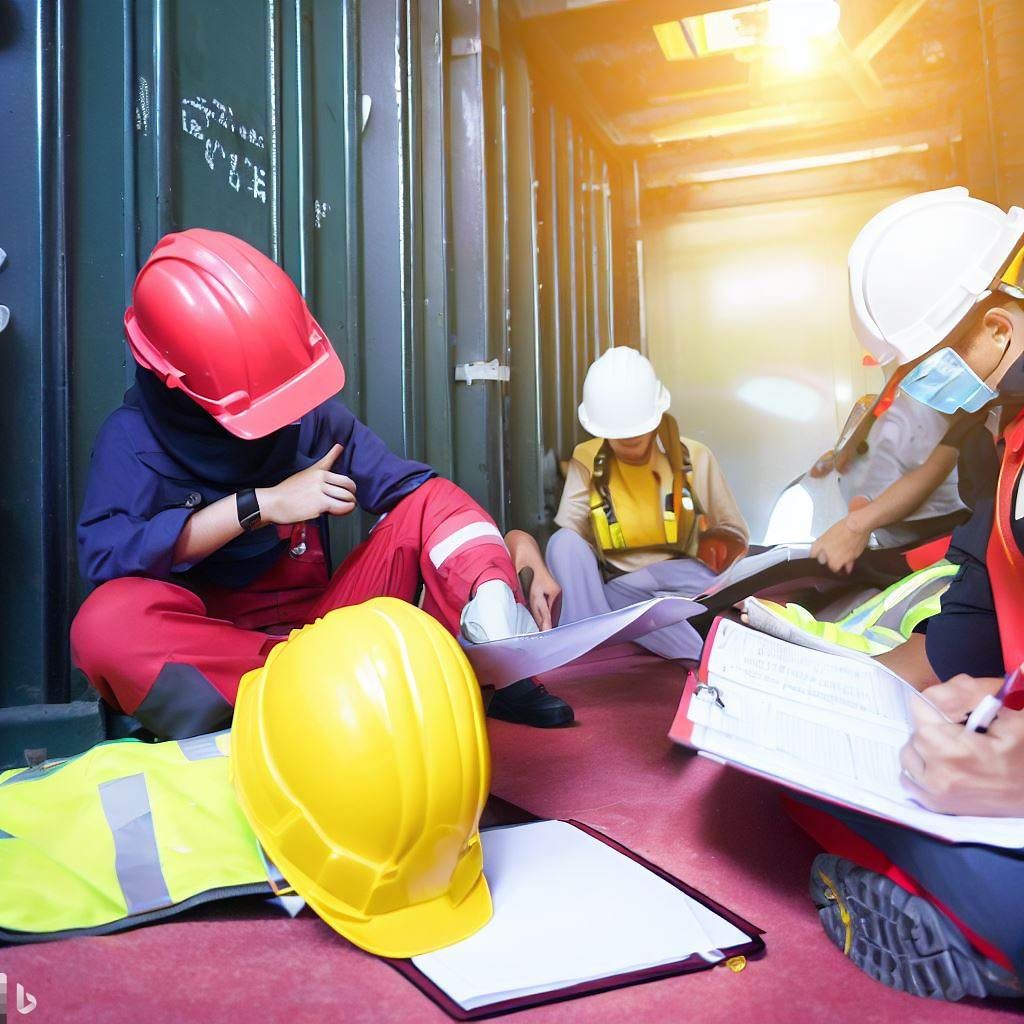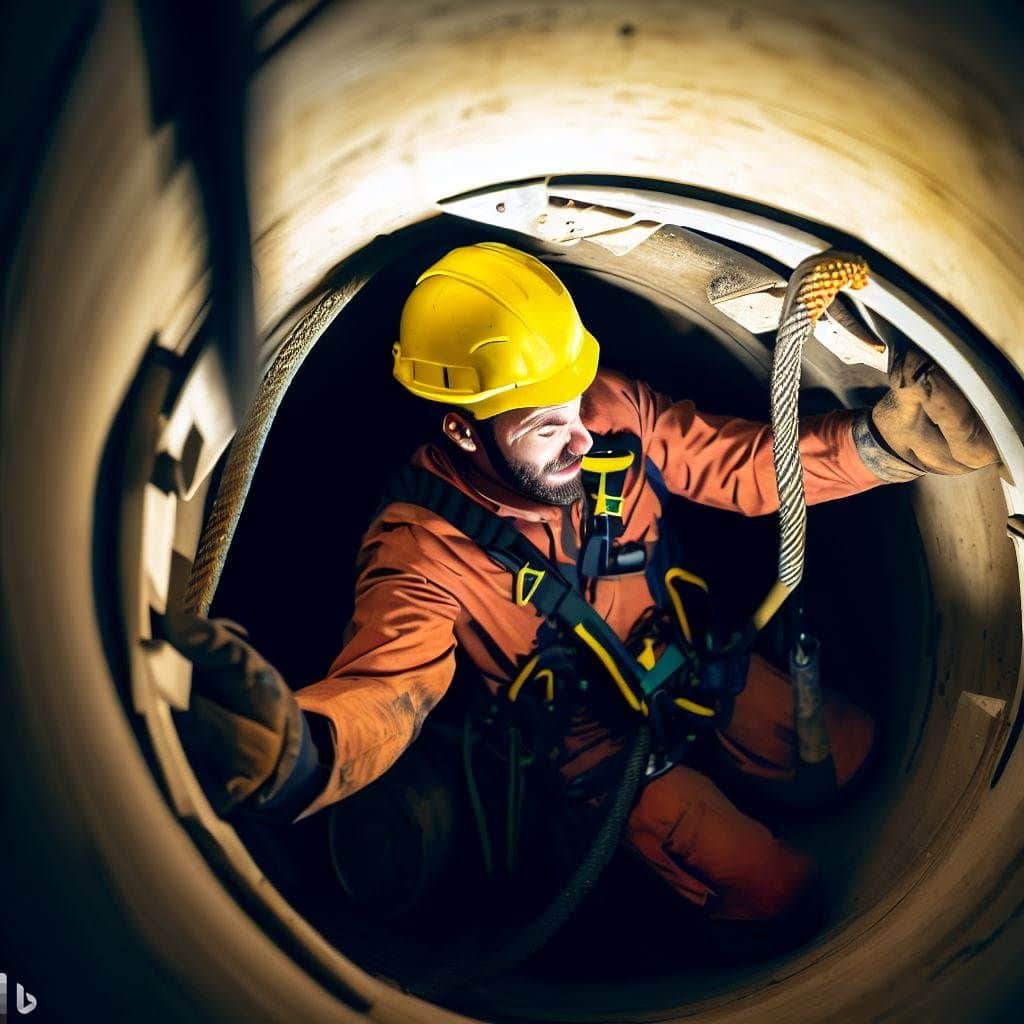Navigating the Essentials: A Comprehensive Guide to Confined Space Awareness Training Requirements
Confined space awareness training is critical in ensuring the safety and well-being of workers who must enter, work in, or supervise confined spaces. These environments pose unique challenges and risks that require specialized knowledge, skills, and procedures to mitigate.
By understanding the confined space awareness training requirements, employers and employees can create safer working conditions, prevent accidents, and comply with relevant regulations.
The purpose of this comprehensive guide is to provide an in-depth understanding of the various aspects of confined space awareness training requirements, including the definition and characteristics of confined spaces, the importance of this type of training, the hazards and risks associated with confined spaces, and the components of an effective training program.
Additionally, this guide will discuss the roles and responsibilities of those involved in confined space safety, best practices for entry and rescue, and how to evaluate and select training providers. Finally, we will touch upon maintaining compliance and continuous improvement in confined space safety programs.
Understanding Confined Spaces: Definition and Characteristics
Definition of Confined Spaces
To comprehend the confined space awareness training requirements, it is essential first to understand what constitutes a confined space. According to the Occupational Safety and Health Administration (OSHA), a confined space is an area with limited or restricted means of entry and exit, not designed for continuous employee occupancy, and large enough for a worker to enter and perform work.
Characteristics of Confined Spaces
Several characteristics set confined spaces apart from other work environments. These include limited access, restricted air circulation, potentially hazardous atmospheres, and engulfment or entrapment hazards. Limited access refers to the difficulty entering or exiting the space, making it challenging to perform work tasks or evacuate in an emergency.
Restricted air circulation can result in insufficient oxygen levels, toxic gases, or flammable atmospheres. Engulfment hazards involve the risk of being buried or suffocated by loose materials, while entrapment hazards can arise from tight spaces, machinery, or other obstructions.

The Importance of Confined Space Awareness Training
Enhancing Worker Safety
One of the primary reasons for confined space awareness training requirements is the need to protect workers from the unique hazards and risks associated with these environments.
Proper training equips workers with the knowledge and skills to identify potential hazards, follow safety procedures, and respond effectively in an emergency. This significantly reduces the likelihood of accidents, injuries, and fatalities in confined spaces.
Ensuring Regulatory Compliance
Employers must legally comply with OSHA regulations regarding confined spaces, including providing appropriate training for their workers. Failure to meet these requirements can result in severe penalties, including fines, lawsuits, and even criminal charges in extreme cases. Employers can avoid noncompliance and the associated consequences by understanding and adhering to confined space awareness training requirements.
Fostering a Culture of Safety
Confined space awareness training is crucial for meeting regulatory requirements and promoting a workplace safety culture when workers are educated on the hazards and risks associated with confined spaces and understand the importance of following safety procedures.
They are more likely to prioritize their safety and the well-being of their co-workers. This contributes to a safer work environment overall and helps to minimize the risk of accidents and injuries.
Confined Space Hazards and Risks
Atmospheric Hazards
One of the most significant hazards in confined spaces is the presence of dangerous atmospheres. This can include insufficient oxygen, toxic gases, or flammable vapors. These hazards can cause workers to lose consciousness, suffer respiratory distress, or even result in explosions or fires.
Physical Hazards
Confined spaces may also present physical hazards, such as engulfment, entrapment, or falls. Engulfment occurs when a worker is buried or suffocated by loose materials, such as sand, grain, or water. Entrapment hazards involve tight spaces, machinery, or other obstructions that can trap a worker, making it difficult to escape. Falls are another risk, especially in confined spaces with varying levels or unstable surfaces.
Human Factors
Human factors can also contribute to confined space risks, including lack of training, poor communication, and complacency. Not adequately trained workers may not recognize hazards or follow safety procedures, increasing the likelihood of accidents.
Inadequate communication between workers and supervisors can lead to confusion or misinterpreting of safety protocols. Complacency can result from a false sense of security or familiarity with confined spaces, causing workers to overlook potential hazards or disregard safety measures.
Confined Space Awareness Training Requirements and Regulations
OSHA Standards
In the United States, OSHA sets confined space awareness training requirements standards through its Permit-Required Confined Spaces standard (29 CFR 1910.146). This regulation outlines the criteria for identifying permit-required confined spaces, the requirements for developing and implementing a confined space entry program, and the necessary training for workers who enter or work in these spaces.
Training Requirements
Under OSHA’s standard, employers must provide confined space awareness training for all workers required to enter or work in permit-required confined spaces. This training must ensure workers have the knowledge, skills, and abilities to safely perform their duties in confined spaces. Training should cover hazard recognition, safe work practices, personal protective equipment (PPE), emergency response procedures, and other applicable topics.
Retraining and Certification
OSHA requires that confined space awareness training be provided to workers whenever a change in operations or procedures or if a worker’s job performance indicates a lack of understanding or skill. Additionally, workers must be retrained and recertified at least every 12 months or as needed to ensure continued confined space safety competency.
Components of an Effective Confined Space Awareness Training Program
Hazard Recognition and Assessment
A crucial component of any confined space awareness training program is teaching workers to recognize and assess potential hazards. This includes understanding the various confined spaces and associated risks and identifying specific hazards, such as dangerous atmospheres, engulfment, or entrapment.
Safe Work Practices and Procedures
Training should also cover safe work practices and procedures for confined spaces, such as proper entry and exit procedures, lockout/tagout procedures for hazardous energy sources, and the implementation of ventilation systems to control atmospheric hazards. Additionally, workers should be trained on the proper use, inspection, and maintenance of PPE and other safety equipment.
Emergency Response and Rescue
In an emergency or accident in a confined space, workers must be prepared to respond effectively. Confined space awareness training should include instruction on emergency response procedures, such as evacuating the space, initiating rescue operations, and administering first aid or CPR if necessary.
This training should also address the roles and responsibilities of the rescue team, the use of specialized rescue equipment, and the importance of communication during an emergency.
Roles and Responsibilities in Confined Space Safety
Employers
Employers are responsible for ensuring the safety of their workers in confined spaces by developing and implementing a comprehensive confined space entry program. This includes identifying permit-required confined spaces, establishing entry procedures, providing necessary training and equipment, and conducting regular inspections and evaluations to ensure compliance with OSHA regulations.
Employees
Employees are responsible for adhering to their employers’ safety procedures and protocols. This includes attending required training, wearing appropriate PPE, following entry and exit procedures, and reporting any hazards or issues encountered during work in confined spaces.
Entry Supervisors
Entry supervisors play a critical role in confined space safety by overseeing and authorizing entry into permit-required confined spaces. They ensure all required safety measures, including proper ventilation, hazard controls, and rescue plans. Entry supervisors must also ensure workers have completed the necessary training and are competent in confined space safety.
Best Practices for Confined Space Entry and Rescue
Pre-Entry Planning
Before entering a confined space, it’s crucial to conduct a thorough pre-entry planning process. This includes identifying the hazards present, evaluating the risks involved, and determining the necessary safety measures to mitigate those risks. Pre-entry planning should also involve the development of a written entry permit that outlines the specific procedures and requirements for entry.
Atmospheric Monitoring
Atmospheric monitoring is a critical component of confined space safety, as it helps to identify and control dangerous atmospheres. Workers should use appropriate gas detection equipment to continuously monitor the air quality inside the confined space, ensuring that oxygen levels, toxic gas concentrations, and flammability levels remain within safe limits.
Communication and Coordination
Effective communication and coordination are essential during confined space entry and rescue operations. Workers should communicate regularly with entry supervisors and rescue teams, reporting any changes in conditions or potential hazards. Additionally, rescue teams should be familiar with the confined space entry permit and the specific rescue procedures for the space in question.
Evaluating and Selecting Confined Space Awareness Training Providers
Accreditation and Reputation
When choosing a confined space awareness training provider, looking for accreditation from reputable organizations, such as OSHA or the National Fire Protection Association (NFPA), is essential. Accreditation ensures that the training provider meets established standards for quality and content. Additionally, consider the provider’s reputation within the industry and seek recommendations from trusted sources.
Customization and Flexibility
An effective confined space awareness training program should be tailored to your workplace’s needs and hazards. Look for training providers that offer customization options and the flexibility to adapt their training materials and methods to your unique circumstances.
Hands-On Training and Practical Application
Confined space awareness training should include a combination of classroom instruction and hands-on training to ensure that workers can apply the knowledge and skills they’ve learned in real-world situations. Look for providers that offer practical training exercises and opportunities for workers to practice using safety equipment and procedures.

Maintaining Compliance and Continuous Improvement
Regular Inspections and Evaluations
To ensure ongoing compliance with confined space awareness training requirements and maintain a high level of safety, employers should conduct regular inspections and evaluations of their confined space entry program. This includes reviewing entry permits, assessing hazard controls, and monitoring worker performance.
Retraining and Skill Development
Continuous improvement in confined space safety depends on maintaining worker competency and skills. Employers should provide retraining and recertification opportunities for their employees and opportunities for further skill development and advancement in confined space safety.
Incident Reporting and Analysis
In the event of an accident or near-miss in a confined space, employers should conduct a thorough investigation and analysis to determine the root cause and identify any areas for improvement. This information can be used to update and refine the confined space entry program and inform future training efforts.
Conclusion
Confined space awareness training is critical to workplace safety for those who work in or around confined spaces. Employers and employees can create safer working conditions and prevent accidents by understanding the definition and characteristics of confined spaces, the associated hazards and risks, and the confined space awareness training requirements.
In addition to meeting regulatory requirements, comprehensive confined space awareness training can contribute to a workplace safety culture, promoting the well-being of all workers.
Frequently Asked Questions:
What is a confined space?
A confined space is an area with limited or restricted means of entry and exit, not designed for continuous employee occupancy, and large enough for a worker to enter and perform work.
Why is confined space awareness training important?
Confined space awareness training is important for enhancing worker safety, ensuring regulatory compliance, and fostering a culture of safety within the workplace.
What are the main hazards associated with confined spaces?
Confined spaces can present atmospheric hazards, physical hazards, and human factors that contribute to increased risk.
What are the OSHA requirements for confined space awareness training?
OSHA requires that employers provide confined space awareness training for all workers who are required to enter or work in permit-required confined spaces, ensuring they have the necessary knowledge, skills, and abilities to perform their duties safely.
What should be included in a confined space awareness training program?
Effective confined space awareness training should cover hazard recognition and assessment, safe work practices and procedures, emergency response and rescue, and the roles and responsibilities of those involved in confined space safety.
